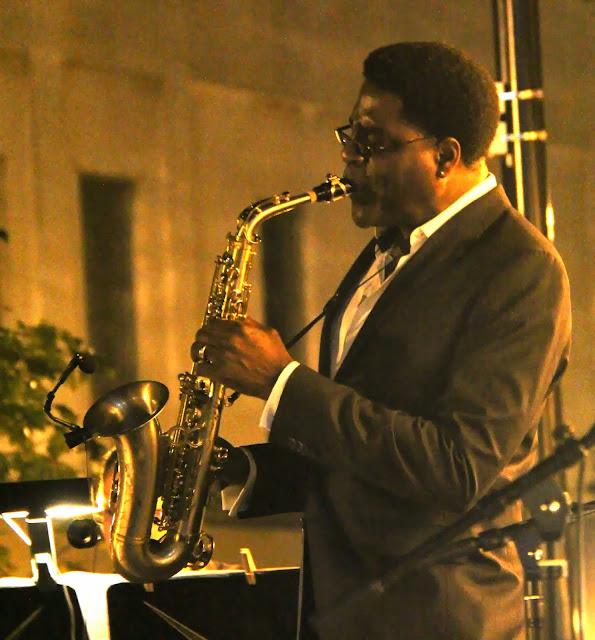 |
| Terri Lyne Carrington, drummer for ACS, chats with members of the audience after the concert. |
Was ACS playing "egghead" jazz?
For several pieces, I heard only a few notes of the melody, somewhere in the middle of the piece. Of course, this approach is one of the major complaints of jazz haters and jazz purists alike, but I love it, and I hardly ever hear it live anymore. I like hearing things that I can't imagine or that seem impossible.
If so, I'm an egghead, too.

Allen: I was surprised to hear her play so little in this standard piano trio format. Of course, that made everything she played very important. I was most looking forward to hearing her because I've followed her music for 20 years, starting with Robert Altman's "Jazz '34," the jam session companion to his film "Kansas City." She portrayed Mary Lou Williams, as shown in the video below. A decade later, Allen made an album with Jack DeJohnette and Dave Holland, "The Life of a Song" (right), a standard piano trio work, very intense as you can imagine given the lineup. ACS played one of her pieces from that album, "Unconditional Love," which has a Latin beat.
Carrington: She also took a minimal approach. I think she could have been happy with just a high hat and a snare drum — and not necessarily the whole drum, just the rim.
Spalding: I expected her to have that facility, but I was shocked at her ability to generate so much vitality without grandstanding.











































.jpg)



